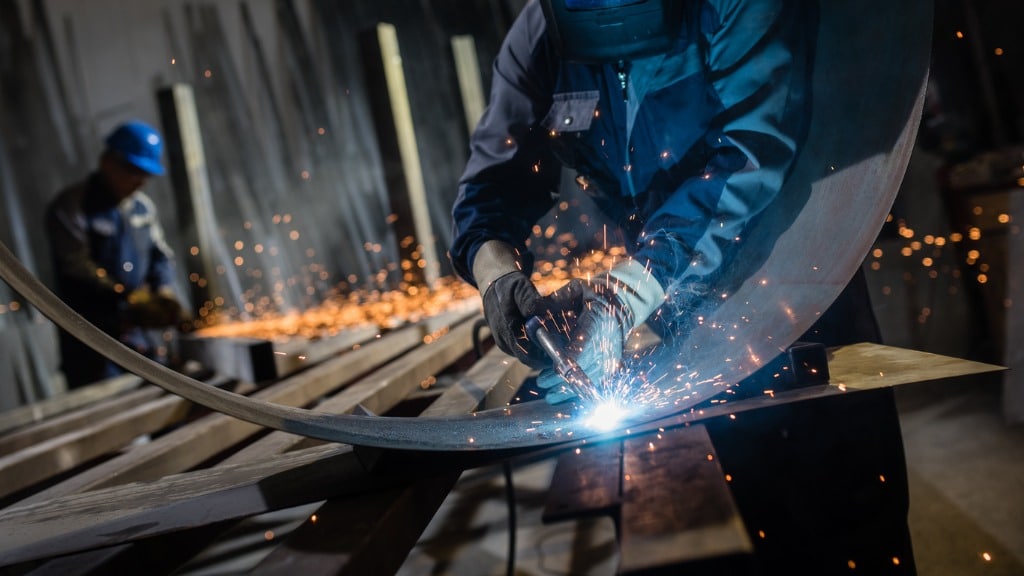Sheet metal is metal that has been compressed into thin, flat pieces using specialized manufacturing processes. Sheet metal is one of the most common construction materials in the world, and its properties make it advantageous for several industrial applications. There is a wide range of sheet metals, and each one has its advantages and disadvantages.
This article will discuss several common types of sheet metal and explain the properties of each kind. Continue reading to discover which type of sheet metal is right for your application and learn more about how Design Mechanical can help you with your next construction project.
Stainless Steel Sheet Metal
Stainless steel sheet metal is probably what most people think of when someone mentions sheet metal. This high-strength is one of the most common types of sheet metal in the world, thanks to its corrosion resistance. Stainless steel will preserve its strength and appearance even when subjected to harsh conditions and substances, such as rain, salt, and acid.
Manufacturers often use stainless steel sheet metal for chemical and liquid processing devices and machinery that needs to withstand harsh conditions. Chromium gives stainless steel a lustrous sheen, making it ideal for situations where appearance is a factor.
Copper Sheet Metal
Copper sheet metal is well-known for its electrical conductivity and heat resistance. As a result, copper is the metal of choice for interior wiring and conduction-related applications, thanks to its ability to generate a lot of heat or electricity and transfer those energies.
Copper sheet metal is easy to produce and remarkably resistant to stress and corrosion, making it a durable and robust sheet metal. People use copper sheet metal for various applications, including heat sinks, roofs, rain gutters, and doors, as well as artistic metalwork and prototyping.
Brass Sheet Metal
Brass sheet metal is a metal alloy made of copper and zinc. Similar to stainless steel and copper, brass sheet metal is corrosion-resistant and has exceptional tensile strength. As a result, you’ll find that people often use brass sheet metal in the industrial sector and for indoor and outdoor decorations.
Aluminum Sheet Metal
Aluminum sheet metal is one of the most malleable and cost-effective sheet metals available. Aside from stainless steel, aluminum is the most prevalent sheet metal and can be made of copper, brass, tin, nickel, or titanium.
Because aluminum is naturally soft, you can strengthen it by adding elements, such as iron, copper, silicon, or magnesium. People often coat it with chromate, conductive or chemical anodizing, silver or nickel plating, or a combination of these materials to provide additional corrosion resistance. You can find aluminum sheet metal in various places, including electronic equipment, fan blades, automobile parts, and home appliances.
Corrugated Sheet Metal
People make corrugated sheet metal using a cold-form method, which involves pressing the sheets flat, rolling them to achieve a specific shape and pattern, and then cutting them to the desired length. Corrugated sheet metal is heavily customizable, giving it a distinct advantage over other sheet metals. People commonly use corrugated sheet metal for roofing and siding projects, thanks to its strength and durability.
Galvanized Steel Sheet Metal
Galvanized steel sheet metal is a carbon steel sheet that has been dipped in zinc. The zinc coating is more resistant to scratching and manufacturing damage than a typical galvanized coating. Galvanized sheet metal frequently produces the highest surface polish, adhesion, and paint quality. The combination gives exceptional resistance to peeling and blistering when painted with suitably selected primers or paints. Due to its corrosion resistance, people often use galvanized sheet metal for car parts, water pipelines, fences, roofs, and staircases.
Cold-Rolled Steel Sheet Metal
Cold-rolling is a sheet metal fabrication process that involves placing a metal alloy (often a steel alloy) between two rollers and bending the metal into a thin sheet. The sheet is then rinsed in acidic materials before being compiled into the finished roll.
The sheet also receives a heat treatment to provide increased strength and a higher quality finish. Cold-rolled sheet metal is ideal for laser cutting, piercing, and custom shaping. It is typically no more than 3.2 mm thick and is excellent for painting and electroplating.
Hot-Rolled Steel Sheet Metal
Hot-rolled steel sheet metal is subjected to high temperatures to increase its flexibility. Hot-rolling is very similar to cold-rolling, except hot-rolling subjects the steel alloy to temperatures exceeding 1400 degrees Fahrenheit. Manufacturers often use hot-rolled steel for truck and automobile frames and agricultural equipment because it is resistant to residual stress and substantially less expensive to produce than cold-rolled steel.
Design and Construction Services from Design Mechanical
There is an ideal sheet metal choice for nearly every construction project. It can be difficult to determine which one is best for you. Design Mechanical is the most trusted mechanical service and commercial construction company in Kansas City. We can help you make an informed decision and determine which type of sheet metal is ideal for your construction project.
Give us a call at (913) 281-7200 to learn more about the different types of sheet metal and how we can use them to enhance your commercial building.

